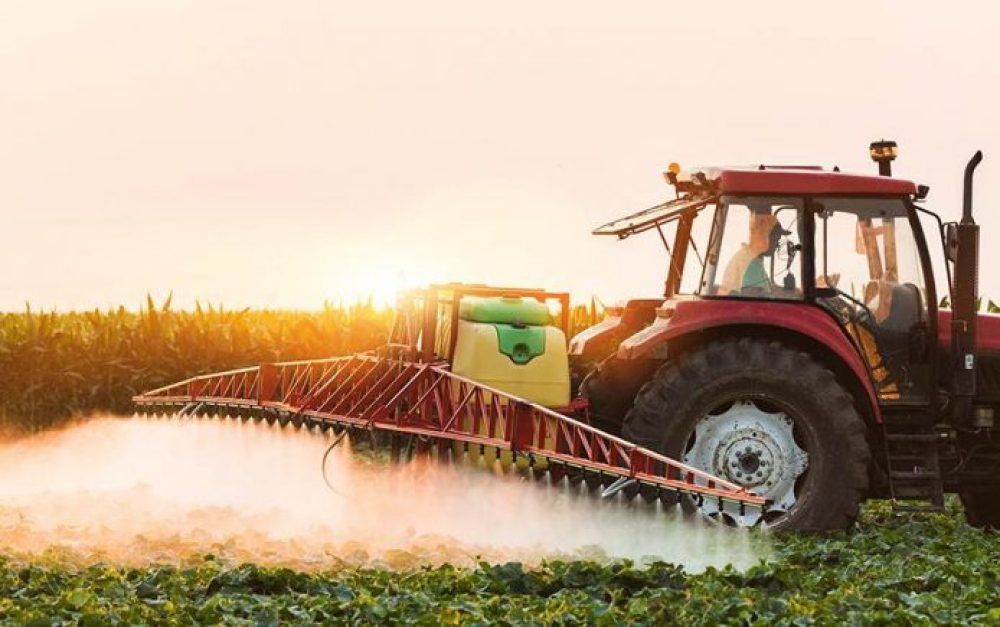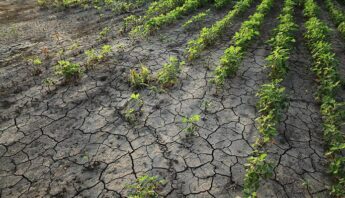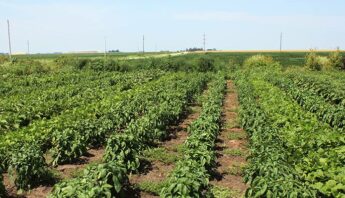Like a wildfire burning out of control, the epidemic of dicamba drift blowing across 20 states this summer has already damaged over three million acres of soybean cropland. Adding to the list of some 2,200 reported herbicide injuries are likely many more damaged acres of fruit and vegetable farms, vineyards, trees, home gardens, hedgerows and plant habitats critical to pollinators and other wildlife.
Monsanto — maker of the dicamba herbicide at fault, and the genetically engineered dicamba-resistant crops implicated in the crisis — has been quick to blame farmers. But farmers are clear that the pesticide and biotech seed giant is responsible for this mess. And they want the U.S. Department of Agriculture (USDA) and the Environmental Protection Agency (EPA) to pull these products from the market. Now.
Chemical arms race to the bottom
For decades, Monsanto has enjoyed unrivaled dominance in the pesticide and biotech seed marketplace. However, in recent years, the company’s monopoly control of agricultural seeds and pesticides — built largely on the marketing of its genetically engineered Roundup Ready seeds designed to maintain sale of its flagship herbicide Roundup — has begun to crack. Farmers have been struggling with the emergence and spread of RoundUp-resistant “superweeds” now infesting over 90 million acres of farmland. RoundUp has been found in nearly all stream and air samples tested in the Midwest. And the World Health Organization has concluded that glyphosate — the active ingredient in Roundup — is a probable carcinogen.
Rather than clean up its act, Monsanto has redoubled its efforts to follow the same recipe for disaster, racing against rivals like Dow AgroScience to introduce new lines of transgenic seeds engineered to resist even more chemical herbicides.
As I warned five years ago: “If you’re thinking that pouring more chemicals onto already devastated farmland sounds a bit like pouring gasoline on a fire, I’d have to agree with you.”
“It’ll be fine”
This is where the story headline goes from “disaster waiting to happen” to “disaster here and now.” Dicamba is a notoriously drift-prone herbicide. And it takes a ridiculously small amount of dicamba to severely damage a vulnerable crop. That’s why PAN, farmers and farm businesses have been warning USDA for years that if the agency approved Monsanto’s dicamba-resistant seeds, the accompanying surge in dicamba use would lead to a drift crisis that endangers farmer livelihoods across the country. And that’s exactly what’s happening.
Monsanto, meanwhile, has been quick to blame farmers and pesticide applicators for “improper use” or for applying the older, even more drift-prone formulations of dicamba. But who began pushing farmers to buy the dicamba-resistant seeds in the first place, before Monsanto’s supposedly less volatile dicamba was approved for sale? And whose sales representatives actually encouraged farmers to go ahead and apply the old dicamba products illegally, knowing the herbicide would drift, while telling them “it’ll be fine”?
That’s right. Monsanto. The result? Anything but fine.
Profit over reason
Turns out, it’s not only the old dicamba that is volatile. University researchers have found that Monsanto’s much-hyped new dicamba product — the one that farmers have been spraying this season — is also volatile and prone to drift. So why did EPA ever approve such a product in the first place?
Quite simply, industry greed won out. EPA only looked at Monsanto’s volatility studies, which conveniently concluded, “it’ll be fine.” EPA did not look at independent researchers’ studies. Why? Because they hadn’t been done. And that’s because Monsanto actually prohibited researchers from testing the volatility claims the company was making about its product before it had secured EPA approval.
“Monsanto does not listen to voices in the field or allow public testing of its products.”
Monsanto justified its refusals to allow independent study of its product by stating that such investigations could slow down EPA’s approval process. EPA, for its part, did not seem to mind the lack of thorough research. As University of Missouri weed scientist Kevin Bradley said,
Many of my colleagues would have liked to do volatility research and were not allowed. There’s a strong stipulation about what we can research and what we can’t.”
Farmers have had enough
This week, 85 farms and farmer support organizations sent letters to USDA and EPA, demanding that these agencies take immediate action to rescind their approval of Monsanto’s dicamba-resistant seeds and dicamba products.
Missouri farmer, Wes Shoemyer, nailed it when he told us,
[Monsanto CEO] Robb Fraley’s definition of success is totally different from mine, as he gives no thought to the farmers who are ill-affected. I wouldn’t want him as my neighbor. Monsanto does not listen to voices in the field or allow public testing of its products. This is what happens when your seed company is also the chemical company.”
Wes is right. USDA and EPA, are you listening?








